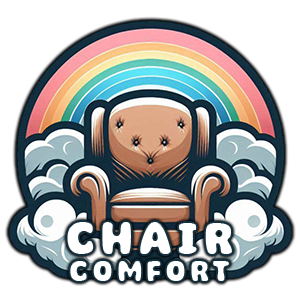
Should a 3 Year Old Be in a High Chair?
Introduction
As parents, we often find ourselves wondering about the best choices for our growing kiddos. One question that pops up a lot is whether a 3-year-old should still be using a high chair. It’s a tricky decision, and there’s no one-size-fits-all answer. In this post, we’ll dive into all the ins and outs of this topic to help you figure out what’s best for your little one.
Quick Answer
While some 3-year-olds may still benefit from using a high chair, many are ready to transition to a booster seat or regular chair. The decision depends on your child’s developmental readiness, safety considerations, and family dynamics.
My Family’s High Chair Journey
Before we dive in, let me share a quick story from my own experience. When my son Jake turned 3, we were on the fence about keeping him in his high chair. He was getting antsy during meals, always trying to climb out and join us at the “big table.” One day, while attempting a daring escape, he nearly toppled the chair. That was our wake-up call. We realized it was time to make a change, not just for his safety but also to support his growing independence.
Factors to Consider
Is Your Child Ready?
Every kiddo grows at their own pace, so it’s super important to look at your child’s individual development. Here are some signs that your 3-year-old might be ready to ditch the high chair:
- They can sit still without squirming for most of the meal
- They’re tall enough to sit comfortably at the table
- They show interest in eating with the rest of the family
- They can follow basic table rules (like not throwing food)
Safety First!
Safety is always the top priority. While high chairs are designed to keep little ones secure, they can become a hazard if your child outgrows them. Ask yourself:
- Does your child try to climb out of the high chair?
- Are they too big for the seat, making it wobbly or uncomfortable?
- Can they unbuckle the straps on their own?
If you answered yes to any of these, it might be time to consider other options.
Family Dynamics
Think about how meals work in your home. Do you all eat together at the table? Is your 3-year-old eager to join in? Sometimes, the desire to be part of the family dining experience can be a big motivator for kids to transition out of the high chair.
Pros of Keeping Your 3-Year-Old in a High Chair

1. Containment is Key
Let’s face it, toddlers can be messy eaters. A high chair keeps the chaos contained, making cleanup a breeze. Plus, it can help your little one focus on eating rather than turning mealtime into playtime.
2. Safety and Security
For some kiddos, especially those who are on the smaller side or have balance issues, a high chair provides a safe and secure spot for meals. The straps and tray can prevent falls and spills.
3. Routine and Familiarity
If your child is a creature of habit (and let’s be honest, most are), sticking with the high chair can provide a sense of comfort and routine around mealtimes.
Cons of Using a High Chair for a 3-Year-Old
1. Stunted Independence
At 3, many kids are itching for more independence. Keeping them in a high chair might hold them back from developing important skills like sitting properly at a table or learning to use utensils effectively.
2. Social Isolation
If the rest of the family eats at the table, your 3-year-old might feel left out in their high chair. This can impact their social development and enjoyment of family meals.
3. Physical Discomfort
As kids grow, high chairs can become cramped and uncomfortable. This might lead to fussiness or resistance at mealtimes.
Alternatives to Consider
Booster Seats: The Happy Medium
Booster seats are a great stepping stone between high chairs and regular chairs. They provide some of the security of a high chair while allowing your child to sit at the table with the family. Look for ones with straps for added safety.
Child-Sized Furniture
Some families opt for child-sized tables and chairs. This can be a fun option that gives kids their own special eating space while helping them transition to regular furniture.
Regular Chairs with Adaptations
If your child is ready for a big kid chair, you can make it safer by adding a non-slip cushion or using a chair with arms for extra support.
Making the Transition: Tips and Tricks
1. Take it Slow
There’s no need to go cold turkey. Start by using the new seating option for one meal a day and gradually increase as your child gets comfortable.
2. Make it Fun
Get your kiddo excited about the change. Let them pick out a special placemat or their own “big kid” utensils for their new spot at the table.
3. Set Clear Expectations
Talk to your child about table manners and what you expect when sitting in a big chair. Keep the rules simple and age-appropriate.
4. Be Consistent
Once you start the transition, try to stick with it. Going back and forth between the high chair and other options can be confusing for your little one.
Real Talk: What Other Parents Are Saying
I reached out to some parent friends to get their take on the high chair debate. Here’s what they had to say:
“We switched our daughter to a booster seat at 2.5, and it was a game-changer. She loved feeling like a big girl at the table with us.” – Sarah, mom of two
“My 3-year-old son still uses a high chair for breakfast and lunch when it’s just us at home. For dinner with the family, he sits in a booster seat. This mix works well for us.” – Mike, dad of three
“We tried moving our 3-year-old to a regular chair, but she kept sliding off. A booster seat with a strap was the perfect solution.” – Emily, mom of one
The Bottom Line
So, should a 3-year-old be in a high chair? The answer really depends on your unique child and family situation. There’s no shame in sticking with the high chair if it’s still working for you, but don’t be afraid to explore other options if your kiddo seems ready.
Remember, every child is different, and what works for one family might not work for another. Trust your instincts, prioritize safety, and don’t be afraid to experiment to find what works best for your little one.
What’s Next?
If you’re thinking about making the switch from a high chair, here are some next steps to consider:
- Assess your child’s readiness based on the factors we discussed
- Research different seating options that might work for your family
- Talk to your pediatrician if you have any concerns about your child’s development or safety
- Start small – try out new seating options for short periods and see how it goes
- Be patient and positive throughout the transition process
Remember, mealtime should be an enjoyable family experience. Whether your 3-year-old is in a high chair, booster seat, or big kid chair, the most important thing is that they’re safe, comfortable, and happy. Here’s to many wonderful family meals ahead, no matter where your little one sits!


Leave a Reply